Login to your account
- Prescription included
- Genuine medication
- All-inclusive service - No hidden fees
- Free next-day delivery
Hormone Replacement Therapy (HRT)
Get menopausal hormone therapy with an online prescription
Hormonal replacement therapy (HRT) is a treatment given to women to reduce unpleasant symptoms of menopause. Taking HRT can help to restore the body’s supply of female hormone levels, reducing the accompanying symptoms and allowing your body to function ‘normally’ again.
euroClinix offers a variety of different types of hormonal replacement therapy medications, allowing you to order your treatment conveniently and safely online, with free next-day delivery.
On this page
What is HRT and how does it work? Can I use HRT to delay menopause? How long does it take to work before you notice a difference? How long can I take it for? What are the signs that you need hormone replacement therapy? What are the different types of HRT for menopause? What are the benefits of HRT? What are the risk factors with HRT? What side effects can occur with HRT? Can I buy HRT treatments online?Available Treatment(s)
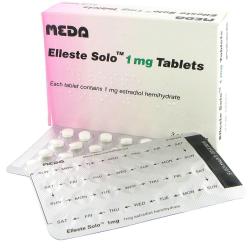
- Treatment for symptoms of menopause
- Can be used to prevent osteoporosis
- An oestrogen-only HRT

- Combination HRT
- Suitable for women with a uterus
- Available in different dosages

- Effectively reduces menopausal symptoms
- Suitable for women who have had a hysterectomy
- Can be used for the prevention of osteoporosis
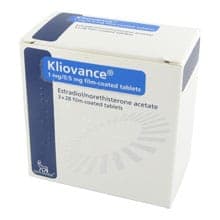
- Helps to treat menopausal symptoms
- Can help prevent osteoporosis
- HRT for women who have not had a hysterectomy
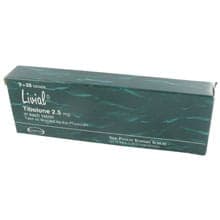
- Treats menopause symptoms effectively
- Dual-treatment of menopause and osteoporosis
- Supports hormonal balance
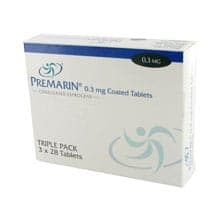
- Alleviates symptoms of menopause such as hot flushes and vaginal dryness
- Prevents osteoporosis in postmenopausal in women
- Suitable for women who have had a hysterectomy
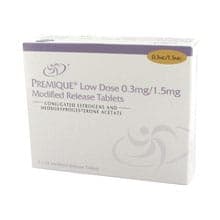
- An effective treatment for menopausal symptoms
- Can treat osteoporosis after menopause
- Suitable for women who have not had a hysterectomy
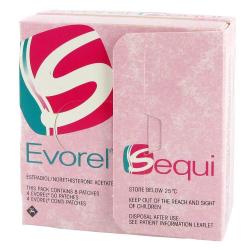
- Provides relief from the symptoms of menopause
- Can prevent osteoporosis
- Suitable for women who have not had a hysterectomy
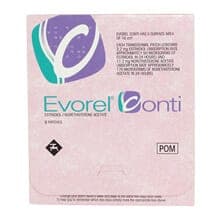
- Reduces menopausal symptoms effectively
- Can be used as a treatment for osteoporosis
- Suitable for women who have not had a hysterectomy
What is HRT and how does it work?
HRT stands for hormone replacement therapy, which is a type of hormonal substitutes used to treat menopause symptoms in women.
Leading up to the menopause, a woman gradually starts to produce less oestrogen (or estrogen), resulting in oestrogen levels decreasing significantly. This also slows down, and eventually stops, the production of eggs and periods, disabling women to fall pregnant naturally. The drop in oestrogen levels can also cause a number of unpleasant symptoms to occur, such as mood swings, hot flushes, and vaginal dryness.
The menopause usually occurs in women that are aged between 45-55, but it can happen earlier or later depending on genetics, health and other factors. Women who have an hysterectomy (their ovaries removed) will go through menopause immediately after the operation, regardless of their age.
Hormone replacement therapy helps balance these hormone levels, reducing the unpleasant symptoms women often experience when going through the menopause.
Can I use HRT to delay menopause?
Unfortunately there isn't much you can do to delay the inevitable menopause. You can however take HRT that will reduce or alleviate the symptoms of it. These won’t bring your period and egg production back though.
How long does it take to work before you notice a difference?
You should typically give HRT a few weeks before you feel any effect or a difference on your symptoms and up to 3 months before you feel the full effect.
How long can I take it for?
There is no golden rule here - you can take HRT for as long as you will need it for, and as long as your GP deems it necessary and safe.
Menopause symptoms typically last around 4 years after your last period, which should give you some indication of how long you could take the treatment for.
It is considered that the benefits of HRT outweighs the risk when used short-term (taken for up to 5 years). For long-term use (more than 10 years), your individual risks should be discussed with your GP to ensure you are taking the most suited treatment for you.
What are the signs that you need hormone replacement therapy?
The menopause is when a woman stops getting her monthly period. This usually happens gradually over several years or months, before it eventually stops. The average duration of this transition is 4 years, but sometimes ‘the change’ can also happen more suddenly. This transitioning period is called perimenopause, and typically starts in womens’ 40s, but can start even earlier.
In the UK, the average woman is 51 when the menopause happens, but commonly it affects women aged 45-55.
Not all women going through the menopause will need or wish to take treatment for it. Typically, if you experience severe symptoms that are affecting your quality of life, this is when you should consider getting treatment.
Symptoms of menopause includes:
- hot flushes (sometimes also referred to as hot flashes) and night sweats
- reduced libido (sex drive), vaginal dryness or discomfort during sex
- sleeping difficulties, memory and concentration problems
- low mood, mood swings or anxiety
If you are below the age of 45 years and have started experiencing symptoms of the menopause you should speak to your GP, as they can confirm if you are experiencing early menopause (premature menopause). This is typically done by assessing your symptoms, but can also sometimes be done by doing a blood test of your hormone levels.
What are the different types of HRT for menopause?
Women going through menopause symptoms have different types of HRT available to them. The best hormone replacement therapy for menopause for you is depending on your symptoms severity, your overall health, whether or not you have had a hysterectomy and personal preference.
There are three main types of hormonal replacement therapy: oestrogen-only, continuous combined HRT and cyclical HRT.
- Oestrogen-only treatments are recommended for women who have had a hysterectomy as there is no risk of cancer of the womb. Women without their ovaries would not need to take additional progesterone because of this. If you have not had a hysterectomy and have been recommended a treatment with oestrogen only, you will need to take progesterone as well.
- Combined HRT consists of both oestrogen and progestogen. This treatment is usually recommended for women who have not had a hysterectomy but are post-menopausal (have not had a period for 12 months). As the supplement of oestrogen can potentially cause cancer of the womb, progestogen is needed to protect the lining of the womb.
- Cyclical HRT treatment suitable for women who have not had a hysterectomy, still have their periods and are experiencing menopausal symptoms. This treatment can be taken in two ways. For women who have regular periods, oestrogen is taken daily, with a progestogen taken at the end of the menstrual cycle for 14 days. For women whose periods are irregular, oestrogen is taken daily and a progestogen is taken for 14 days, every three months.
In addition to these, testosterone may be prescribed along with other treatments for women whose libido (sex drive) does not improve with the use of any of the other methods of HRT. It can also help to reduce the chances of osteoporosis in post-menopausal women.
HRT also comes in different forms such as skin patches, tablets, injections and vaginal oestrogen such as vaginal rings, gels, creams and pessaries. Which of these are best suited for you will depend on factors such as your symptoms and risk factors, as some work best relieving local symptoms, and some have reduced risk of more serious side effects.
What are the benefits of HRT?
The main benefit of this treatment is that it helps to alleviate any distressing symptoms associated with the menopause, including vaginal dryness or itching, mood swings, hot flushes and night sweats, by supplying the body with hormones.
The declining levels of oestrogen during the menopause can also cause the bones to become thinner and more fragile, increasing the risk of fractures. The supplements of oestrogen from this treatment can also help maintain bone strength. This treatment can therefore be used for handling the prevention or reducing the risk of osteoporosis, for women who have tried other treatments with no success.
What are the risk factors with HRT?
As with all NHS-approved medicines, the benefits outweigh the risks linked to it, and no treatments come without risk or side effects. There are however ways of reducing these risks, and plenty of different types of administering HRT so you can find one that is safe for you to use.
HRT and cancer
Certain HRT treatments have been linked to certain types of cancer.
If taking oestrogen-only HRT, there is no increased risk of breast cancer. However, combined HRT treatments that contain both oestrogen and progestogen can increase the risk of breast cancer. If using combined HRT, you should make sure to do regular breast cancer screenings.
Oestrogen-only HRT can increase the risk of ovarian cancer and womb cancer for women that still have their wombs. This is typically why this type of HRT is only offered to women that have had an hysterectomy. Taking progesterone in addition to oestrogen, reduces this risk.
HRT and blood clots, heart disease and stroke
HRT in tablet form can increase the risk of blood clots. The risk is however quite small. Opting for HRT in the form of a patch or a gel does not increase the risk of blood clots and can be a safer option for those women with an increased risk.
If starting HRT below the age of 60, the risk of heart disease and strokes (cardiovascular disease). HRT in the form of tablets has been linked to an increased risk of stroke. But again, this risk is very low for most women under the age of 60.
What side effects can occur with HRT?
As with all medications there is a chance that you could suffer side effects for the first few weeks or months of treatment until your body adjusts.
Side effects for oestrogen HRT can include:
- leg cramps
- headache
- bloating and indigestion
- breast tenderness or breast swelling (can also occur in other parts of the body)
- vaginal bleeding
- nausea or feeling sick
Side effects progesterone can cause:
- acne
- headaches or migraines
- bloating and indigestion
- breast tenderness and swelling of the body
- mood swings and depression
- vaginal bleeding
- back ache and stomach ache
To reduce the risk of side effects, you could be recommended to switch to a different medicine, a new method of administering HRT or lowering the dose. You can also try taking your HRT with food (especially oestrogen), eat a high-carb/low-fat diet and doing exercise and stretching more regularly. These things could help you alleviate the negative effects.
Can HRT cause weight gain?
There is no evidence to support this, although it is a common misconception. The menopause itself can cause weight gain, although this could happen to all women, regardless of whether or not they take HRT for their symptoms. A healthy diet and regular or increased exercise should assist you with this if it occurs.
Can I buy HRT treatments online?
Yes you can. euroClinix offers a variety of different types of HRT to buy online. All you need to do is go to the checkout and complete an online health questionnaire. This will be assessed by one of our doctors before potentially issuing a prescription. After receiving your prescription, the pharmacy will then dispatch your treatment with next-day delivery.
Can I buy HRT over-the-counter?
The short answer is no. Hormone replacement therapy treatments are prescription-only medicines and require a prescription from a doctor before it can be given to you. As mentioned above, you can do this online at an online clinic such as euroClinix.
Due to side effects that can occur and the associated risks, these treatments will only be prescribed by a doctor if they are considered safe for you to use, based on your current health and your medical history.
- What is HRT and how does it work?
- Can I use HRT to delay menopause?
- How long does it take to work before you notice a difference?
- How long can I take it for?
- What are the signs that you need hormone replacement therapy?
- What are the different types of HRT for menopause?
- What are the benefits of HRT?
- What are the risk factors with HRT?
- What side effects can occur with HRT?
- Can I buy HRT treatments online?
Further reading
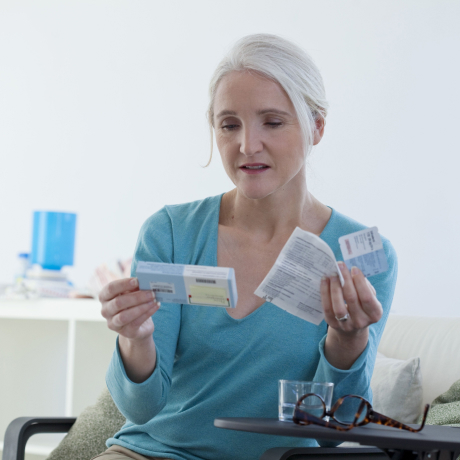
HRT patches and their side effects
Reviewed by Dr. Caroline FontanaSelect
medicationFill out a short
medical formDoctor issues
prescriptionMedication sent
from pharmacy
